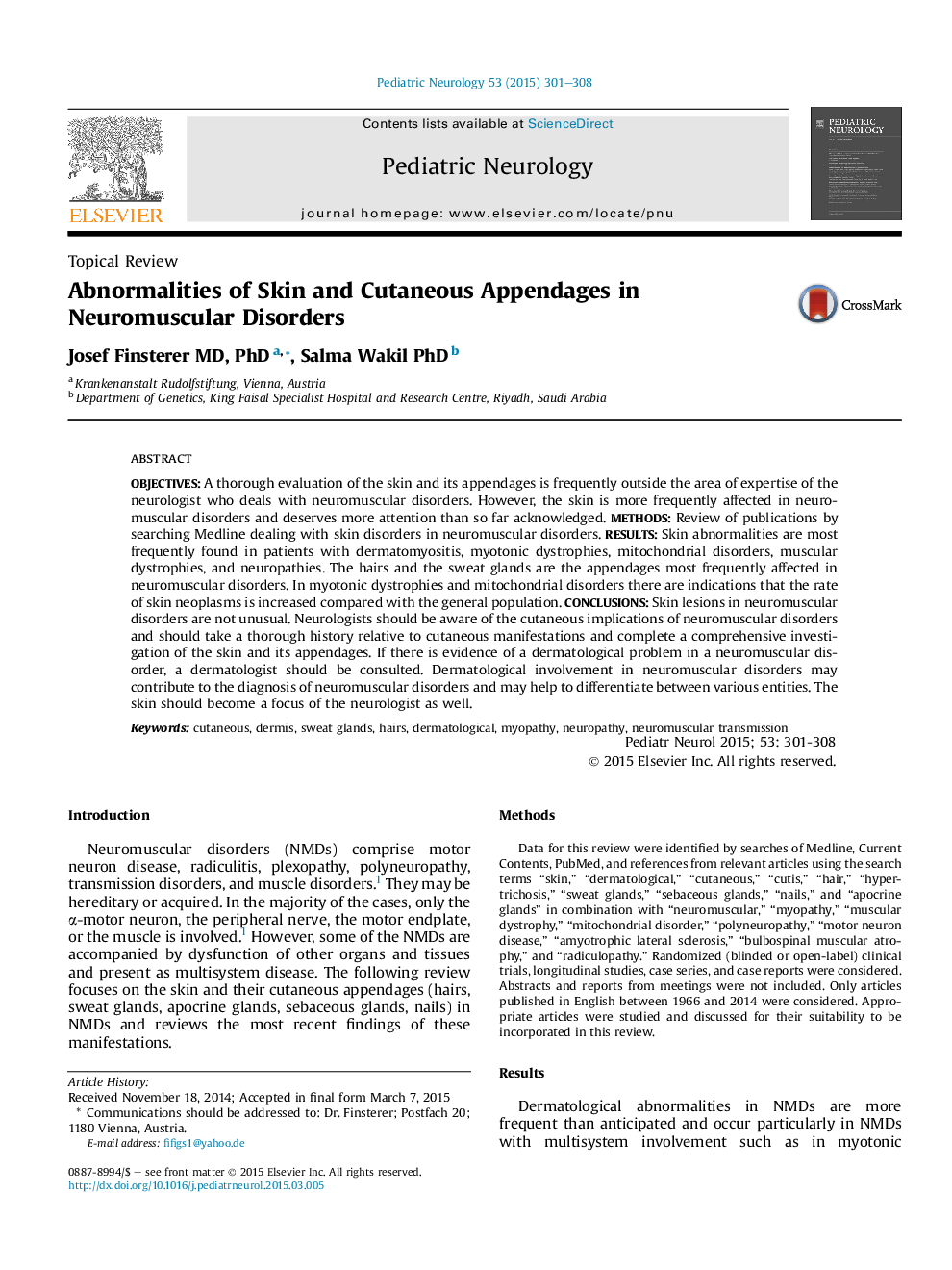| Article ID | Journal | Published Year | Pages | File Type |
|---|---|---|---|---|
| 6042113 | Pediatric Neurology | 2015 | 8 Pages |
ObjectivesA thorough evaluation of the skin and its appendages is frequently outside the area of expertise of the neurologist who deals with neuromuscular disorders. However, the skin is more frequently affected in neuromuscular disorders and deserves more attention than so far acknowledged.MethodsReview of publications by searching Medline dealing with skin disorders in neuromuscular disorders.ResultsSkin abnormalities are most frequently found in patients with dermatomyositis, myotonic dystrophies, mitochondrial disorders, muscular dystrophies, and neuropathies. The hairs and the sweat glands are the appendages most frequently affected in neuromuscular disorders. In myotonic dystrophies and mitochondrial disorders there are indications that the rate of skin neoplasms is increased compared with the general population.ConclusionsSkin lesions in neuromuscular disorders are not unusual. Neurologists should be aware of the cutaneous implications of neuromuscular disorders and should take a thorough history relative to cutaneous manifestations and complete a comprehensive investigation of the skin and its appendages. If there is evidence of a dermatological problem in a neuromuscular disorder, a dermatologist should be consulted. Dermatological involvement in neuromuscular disorders may contribute to the diagnosis of neuromuscular disorders and may help to differentiate between various entities. The skin should become a focus of the neurologist as well.
